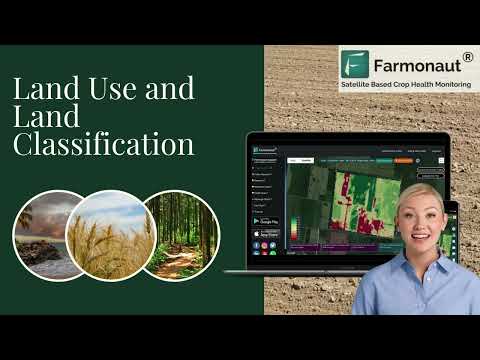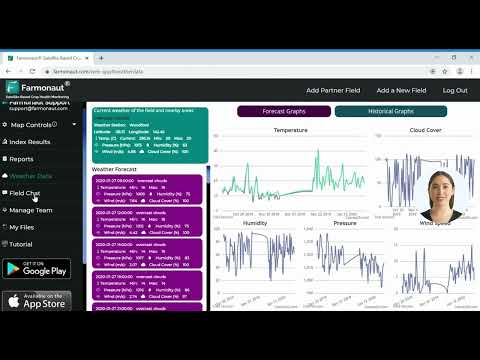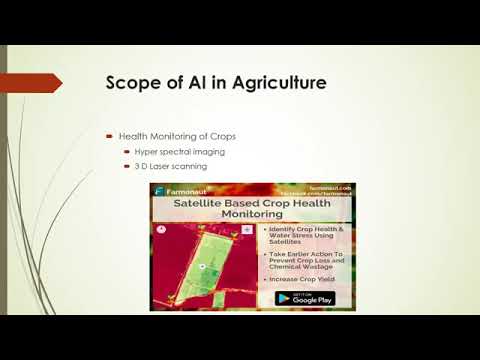Unlock Your GIS Career: New PreGISP Certification Bridges Academia to Industry for Emerging Geospatial Professionals
“The new PreGISP program offers the GISP-E designation to early-career GIS professionals who pass the certification exam.”
In the ever-evolving world of geographic information systems (GIS), staying ahead of the curve is crucial for emerging professionals. As we navigate the intersection of technology and spatial analysis, a groundbreaking development has emerged that promises to reshape the landscape of GIS certification programs. The GIS Certification Institute (GISCI) has unveiled an innovative initiative designed to bridge the gap between academic studies and professional practice in the geospatial industry.
We are thrilled to introduce the PreGISP certification, a new credential that serves as a stepping stone for recent graduates and soon-to-be professionals in the GIS field. This program is set to revolutionize how emerging talents transition from their GIS graduate programs into the dynamic workforce of geographic information systems careers.

The Evolution of GIS Certification Programs
The field of GIS has experienced rapid growth and transformation in recent years. As the demand for skilled geospatial professionals continues to rise, the need for comprehensive and relevant certification programs has become increasingly apparent. Traditional academic pathways, while valuable, often leave a gap between theoretical knowledge and practical industry requirements.
The PreGISP certification addresses this gap by offering a specialized credential tailored to the needs of emerging GIS professionals. This innovative program is designed to complement existing GIS graduate programs and provide a clear pathway towards full professional certification.
Bridging Academia and Industry: The PreGISP Advantage
The PreGISP certification stands out as a unique offering in the realm of professional GIS credentials. By focusing on the specific needs of early-career professionals, this program provides several key advantages:
- Industry Recognition: Earning the GISP-E designation demonstrates a commitment to professional growth and competence in the GIS field.
- Skill Validation: The PreGISP exam assesses both theoretical knowledge and practical skills, ensuring graduates are well-prepared for real-world challenges.
- Career Advancement: This credential can give emerging professionals a competitive edge in the job market, potentially leading to better opportunities and faster career progression.
- Pathway to Full Certification: As a precursor to the CESB-accredited GISP certification, the PreGISP program lays a solid foundation for long-term professional development.
As we explore the intricacies of this new certification, it’s worth noting how technology continues to shape the GIS industry. For instance, innovative companies like Farmonaut are leveraging GIS and remote sensing technologies to revolutionize agriculture.
The PreGISP Certification Process
Obtaining the PreGISP certification involves a structured process designed to assess the candidate’s knowledge and skills in geographic information systems. Here’s an overview of the key steps:
- Eligibility: Candidates must be recent graduates or soon-to-graduate students from accredited academic institutions with GIS-related programs.
- Application: Interested individuals need to submit an application to GISCI, detailing their educational background and any relevant experience.
- Exam Preparation: GISCI provides resources and guidelines to help candidates prepare for the PreGISP exam, covering key areas of GIS knowledge and skills.
- Online Examination: The PreGISP exam is conducted online, testing candidates on various aspects of GIS theory and application.
- Certification Award: Successful candidates are awarded the GISP-E designation, recognizing them as Emerging GIS Professionals.
This streamlined process ensures that the PreGISP certification remains accessible to emerging professionals while maintaining high standards of excellence in the field.
Comparing PreGISP with Traditional Pathways
To better understand how the PreGISP certification fits into the broader landscape of GIS professional development, let’s compare it with traditional educational pathways and the full GISP certification:
| Education/Certification Type | Target Audience | Duration | Key Components | Industry Recognition | Career Impact |
|---|---|---|---|---|---|
| GIS Graduate Program | Students pursuing advanced GIS education | 2 years (typical) | Coursework, research, projects | Academic degree | Entry-level positions |
| PreGISP Certification | Recent graduates, early-career professionals | 6 months (estimated) | Exam, practical skills assessment | GISP-E designation | Mid-level roles, faster career advancement |
| GISP Certification | Experienced GIS professionals | 5+ years | Professional experience, exam, portfolio | GISP designation | Senior positions, industry leadership |
This comparison highlights the unique position of the PreGISP certification as a bridge between academic study and full professional certification, addressing a critical gap in the GIS career pathway.
“The PreGISP certification serves as a precursor to the CESB-accredited GISP certification for emerging geospatial professionals.”
Industry Impact and Future Prospects
The introduction of the PreGISP certification is set to have a significant impact on the GIS industry and workforce development. By providing a structured pathway for emerging professionals, this program addresses several key challenges:
- Skills Gap: Helps bridge the gap between academic knowledge and industry requirements.
- Career Guidance: Offers clear professional development goals for early-career GIS practitioners.
- Industry Standards: Contributes to the establishment of consistent professional standards across the geospatial sector.
- Workforce Readiness: Ensures a steady influx of well-prepared professionals into the GIS job market.
As the geospatial industry continues to evolve, certifications like PreGISP will play a crucial role in shaping the future of the workforce. This initiative aligns with broader trends in professional development, emphasizing the importance of continuous learning and skill validation in rapidly changing technological fields.
Explore Farmonaut’s API for GIS and Remote Sensing Applications
The Role of Technology in Modern GIS Practices
As we discuss the advancement of GIS certification programs, it’s essential to recognize the pivotal role that technology plays in shaping modern GIS practices. The integration of cutting-edge tools and methodologies is transforming how geospatial professionals approach their work.
For instance, companies like Farmonaut are at the forefront of applying GIS and remote sensing technologies to agriculture. By leveraging satellite imagery and artificial intelligence, Farmonaut provides farmers with valuable insights for crop management and sustainability.
These technological advancements underscore the importance of staying current with industry trends and continuously updating one’s skills – a key aspect that the PreGISP certification aims to address.
Preparing for the PreGISP Exam
For aspiring GIS professionals looking to earn the PreGISP certification, thorough preparation is key. Here are some strategies to help candidates succeed in the exam:
- Review Core GIS Concepts: Ensure a solid understanding of fundamental GIS principles, spatial analysis techniques, and cartography.
- Practice with GIS Software: Gain hands-on experience with popular GIS tools and software packages.
- Stay Updated on Industry Trends: Follow developments in GIS technology, applications, and best practices.
- Engage in GIS Projects: Participate in real-world GIS projects to gain practical experience and problem-solving skills.
- Join Professional Networks: Connect with other GIS professionals and participate in industry events and webinars.
By focusing on these areas, candidates can enhance their knowledge and skills, increasing their chances of success in the PreGISP exam and future career opportunities.

Ethical Considerations in GIS Practice
An essential component of the PreGISP certification, and indeed any professional GIS credential, is a strong emphasis on ethical standards. As geospatial technologies become increasingly powerful and pervasive, it’s crucial for GIS professionals to understand and adhere to ethical guidelines in their work.
Key ethical considerations in GIS practice include:
- Data Privacy: Protecting sensitive information and respecting individual privacy rights when handling spatial data.
- Accuracy and Integrity: Ensuring the reliability and truthfulness of geospatial information and analyses.
- Social Responsibility: Considering the broader societal impacts of GIS applications and decision-making processes.
- Environmental Stewardship: Using GIS tools responsibly to support sustainable practices and environmental conservation.
The PreGISP program incorporates these ethical principles, preparing emerging professionals to navigate complex moral landscapes in their future careers.
Access Farmonaut’s API Developer Documentation
Community Engagement and Mentoring in GIS
The PreGISP certification program not only focuses on technical skills and knowledge but also emphasizes the importance of community engagement and mentoring within the geospatial industry. This aspect of professional development is crucial for several reasons:
- Knowledge Sharing: Encourages the exchange of ideas and best practices among GIS professionals at various career stages.
- Networking Opportunities: Helps emerging professionals build valuable connections within the industry.
- Career Guidance: Provides access to experienced mentors who can offer insights and advice on career progression.
- Industry Advancement: Fosters a collaborative environment that drives innovation and pushes the boundaries of GIS applications.
By participating in community events, workshops, and mentoring programs, PreGISP candidates and certified professionals can contribute to the growth and development of the broader GIS community.
The Future of GIS Certification and Workforce Development
As we look ahead, the PreGISP certification represents just the beginning of a new era in GIS professional development. The future of GIS certification and workforce development is likely to be shaped by several key trends:
- Continuous Learning: The rapid pace of technological advancement will necessitate ongoing education and skill updates throughout a GIS professional’s career.
- Specialization: We may see the emergence of more specialized certifications focusing on niche areas within GIS, such as AI integration or 3D spatial analysis.
- Interdisciplinary Approach: GIS professionals will increasingly need to collaborate with experts from other fields, leading to certifications that blend GIS with domains like environmental science, urban planning, or public health.
- Global Standards: As the GIS industry becomes more globalized, we can expect efforts to establish international standards for certification and professional practice.
The PreGISP certification is well-positioned to evolve alongside these trends, continuing to bridge the gap between academic learning and professional practice in the dynamic world of geospatial technology.
Earn With Farmonaut: Join Our Affiliate Program
Earn 20% recurring commission with Farmonaut’s affiliate program by sharing your promo code and helping farmers save 10%. Onboard 10 Elite farmers monthly to earn a minimum of $148,000 annually—start now and grow your income!
Farmonaut Subscriptions
Conclusion: Embracing the Future of GIS Professionalism
The introduction of the PreGISP certification marks a significant milestone in the evolution of GIS professional development. By bridging the gap between academic study and full professional certification, this program addresses a critical need in the geospatial industry. As emerging GIS professionals embark on their careers, the PreGISP certification offers a valuable stepping stone, providing recognition, skill validation, and a clear pathway to continued growth.
We encourage all aspiring GIS professionals to consider the PreGISP certification as part of their career development strategy. By embracing this opportunity, you can position yourself at the forefront of the geospatial industry, ready to tackle the challenges and innovations that lie ahead.
As we’ve seen throughout this discussion, the field of GIS is constantly evolving, with new technologies and applications emerging regularly. From precision agriculture solutions like those offered by Farmonaut to urban planning and environmental management, the potential for GIS to make a positive impact on our world is immense. By committing to professional development and ethical practice, as embodied in the PreGISP certification, we can ensure that the GIS industry continues to thrive and contribute meaningfully to society.
The future of GIS is bright, and with programs like PreGISP paving the way, we’re excited to see how the next generation of geospatial professionals will shape our world.
FAQs about PreGISP Certification
- Who is eligible for the PreGISP certification?
Recent graduates or soon-to-graduate students from accredited GIS-related academic programs are eligible to apply for the PreGISP certification. - How long does it take to earn the PreGISP certification?
The process typically takes about 6 months, including exam preparation and the certification process. - What is the difference between PreGISP and GISP certifications?
PreGISP is designed for early-career professionals, while GISP is for experienced GIS practitioners with several years of work experience. - How often do I need to renew my PreGISP certification?
Renewal requirements will be determined by GISCI, but are likely to involve continuing education and professional development activities. - Can the PreGISP certification help me find a job in the GIS field?
Yes, the PreGISP certification can give you a competitive edge in the job market by demonstrating your commitment to professional standards and up-to-date skills.







